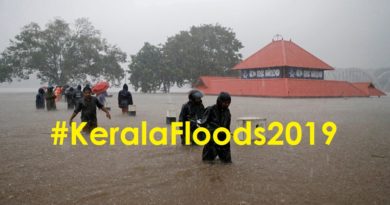Mumbai, Kolkata, Chennai May Be Submerged By 2050
A new research has found that parts of Mumbai, Surat, Chennai and Kolkata will be either underwater or ravaged by recurring floods by 2050 as sea levels across the world will continue to rise with increasing carbon emissions.
India and other Asian countries, including Bangladesh and Indonesia, may see a five to tenfold increase in the population living below the projected high tide line by the end of the century, added the study published in the journal Nature Communication.
The research is obviously a cause for grave concern. Climate changes are manifesting with such rapidity in our lifetime that scientists are now able to pinpoint the timeline when mankind will directly begin to face the consequences of its collective inaction on the environment. According to the research, parts of multiple cities and countries are at risk of being wiped out by rising sea levels, including Mumbai, southern Vietnam, Thailand’s capital Bangkok, Shanghai in China, the ancient city of Alexandria in Egypt and Basra in Iraq. As far as Mumbai is concerned, the research states most of Mumbai particularly the historic downtown area is vulnerable. It is prone to floods and goes under every monsoon partially due to the lack of a decent drainage system and partially because of encroached creeks which were otherwise natural channels for diverting water flow. Mumbai has a population of 12.5 million, according to the last census in 2011.

The research was published by Scott A Kulp and Benjamin H. Strauss of the Climate Central in the US, a non-profit news organization comprising scientists and journalists that analyses and reports on climate science, and contains new estimates on the impact of rising sea levels.
Global sea levels have risen by 11-16 cm or half the height of a 500 ml coke bottle in the 20th century, compared to the pre-industrial era, generally taken to be the year 1850. Even if the world drastically cuts down its annual carbon emissions, sea levels would rise half a metre by 2050 or roughly the height of two 500 ml coke bottles stacked up. In the most extreme scenario the sea level would rise 2 m by the turn of the century, or equivalent to the height of nearly nine such bottles stacked on top of each other.
The UN Secretary General Antonio Gueterres has asked for a 45% cut in global carbon emissions by 2030. The remaining emissions must be soaked up by “carbon sinks” such as forests, oceans and soil, and reduced to what is called “net-zero” by 2050 to contain global temperature rise to 1.5 deg C.
India has a 7,500-km coastline and the second largest coastal population at risk due to sea level rise after China’s current 81 million. Globally, around 110 million people are already living in areas below high-tide levels; in India this number stands at 17 million.
The rising sea levels are expected to continue unless carbon emissions are greatly reduced and coastal defenses, like sea walls and barriers, are strengthened. It’s also been suggested by experts that countries need to begin preparing for internal relocation of its citizens from vulnerable coastal cities, according to reports.
Read the full report: https://www.nature.com/articles/s41467-019-12808-z




